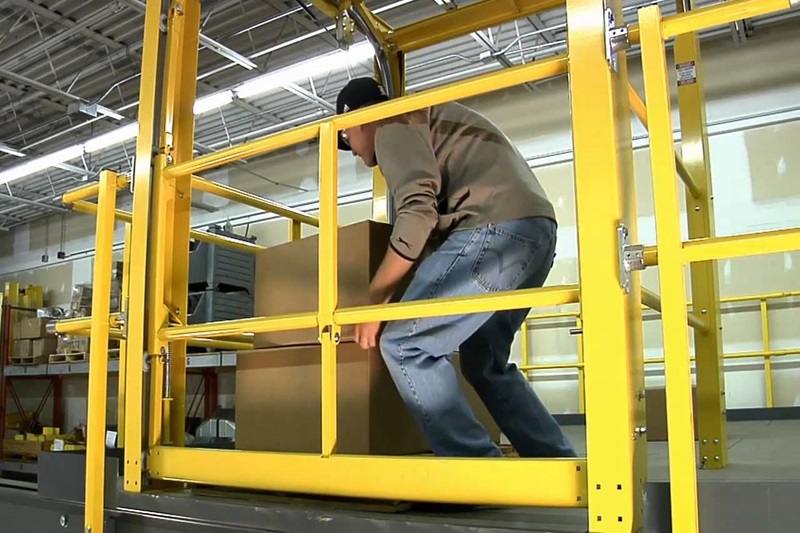The Importance of Mezzanine Fall Protection in the Workplace
Why is the coffee machine placed so far away from your desk? Why does the fridge seem a couple of blocks off when hunger pangs strike? Little did you think, all these placements are part of an ergonomic design that indirectly ensures the safety and comfort of employees. Now, let’s amp up this safety factor by several notches. Will you play ice-hockey without helmets and guards, or jump off an airplane without a parachute? Preposterous it sounds, doesn’t it? Yet, workplaces often ignore a critical aspect of safety – mezzanine fall protection. Why is it overlooked, and why is it vital?
Unbeknownst to many, mezzanine floors in an industrial or commercial establishment can pose a significant risk if proper fall protection isn’t in place, ironically turning productivity towers into potential perils. This post aims to shed light on the importance of mezzanine fall protection in workplaces, its pros and cons, and ways to implement it effectively.
In this journey, I invite you to explore not just the technicalities but the soul of safety, which sits at the intersection of design, foresight, employee care, and the invisible maze behind a high-functioning workplace. Let’s delve in.
Understanding The ‘Why’: The Imperatives of Mezzanine Fall Protection
“What’s the big deal?” you may ask. That’s just where the answers lie! A work environment inherently carries its set of risks, which can accentuate with multi-level setups like mezzanines. From employees tripping or mishandling equipment to unprecedented structural failure, the potential hazards can be myriad and disastrous. From a humane standpoint, ensuring safety is ethically just the right thing to do.
From a business perspective, implementing efficient mezzanine fall protection systems can save companies from facing legal repercussions, financial losses from employee injuries or equipment damage, and productivity reduction due to disrupted operations. Deeper than profits, safety protocols breed an atmosphere of trust and openness amongst employees, fortifying their loyalty and motivation.
The ‘What’ of Mezzanine Fall Protection
Understanding the nature of fall protection systems can help you gauge their importance better. Typically, they involve guardrails, safety gates, pallet gates, or a combination of these, depending on the mezzanine’s purpose and design. It’s not just about having these elements in place; it’s about selecting the right ones tailored to the establishment’s unique needs.
Additionally, compromise on quality is a no-go zone when it comes to safety. Opting for industrial-grade equipment, periodically checking their condition and functionality, and ensuring their proper installation are all non-negotiable aspects of an effective fall protection mechanism.
The ‘When’: Timeliness of Mezzanine Fall Protection
Believe it or not, the time factor comes into play here too. A common misconception is that fall protections need only be in place when mezzanine installations are mature, or when accidents have already occurred. Absolutely not! Safety doesn’t follow the fire-fighting approach. Incorporating fall protections while designing the mezzanine itself is the prudent way.
Factoring in the timely installation of fall protection can prevent accidents, curb unnecessary expenditure of retrofitting systems later, and help smooth operations from the get-go. After all, it’s always better to be safe than sorry.

Pros and Cons of Mezzanine Fall Protection
Despite the apparent advantages mezzanine fall protection systems do have cons. Cost is indeed a factor with quality guardrails, gates, and maintenance adding up. It could also require additional space and may slightly interrupt the flow of work during the installation phase.
On the flip side, the advantages are much more impactful. Comprehensive fall protection increases employee safety and morale, reducing downtime due to accidents, and saving potential legal and medical costs. Fundamentally, it reinforces a company’s commitment to its employees’ welfare, which is priceless.
How to Implement Effective Mezzanine Fall Protection in the Workplace
Implementing fall protection needs a methodical approach – understanding the premises’ specific needs, consulting industry experts for tailored solutions, ensuring installation by certified professionals, and regular system maintenance. Additionally, employee training about safety measures and proper use of the fall protection system is equally vital.
Creating a culture of safety consciousness not just ticks compliance boxes, but engenders a positive workplace ecosystem.
Conclusion: Mezzanine Fall Protection – A Non-negotiable Essential
Slings and arrows may be part of life, but certainly not of a workplace. Living with risk and managing risk are two different approaches with significantly different impacts. Mezzanine fall protection constitutes a fundamental aspect of risk management in the industry. Ignoring it is not just ethically wrong but might also result in financial and human cost that no enterprise should bear.
Its implementation, while might seem cumbersome, can offer exponential returns in preventing accidents, fostering a caring work environment and portraying an image of a responsible organization that values its employees’ safety and well-being. As enterprise guardians, it’s high time we shatter the myth that safety measures are cumbersome overheads and position them where they truly belong – quintessential, vital, and fundamental to any enterprise’s soul. After all, isn’t safety the first step to productivity?
